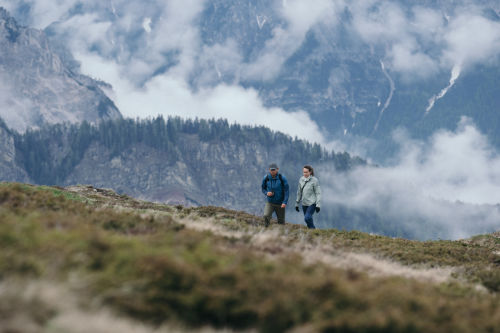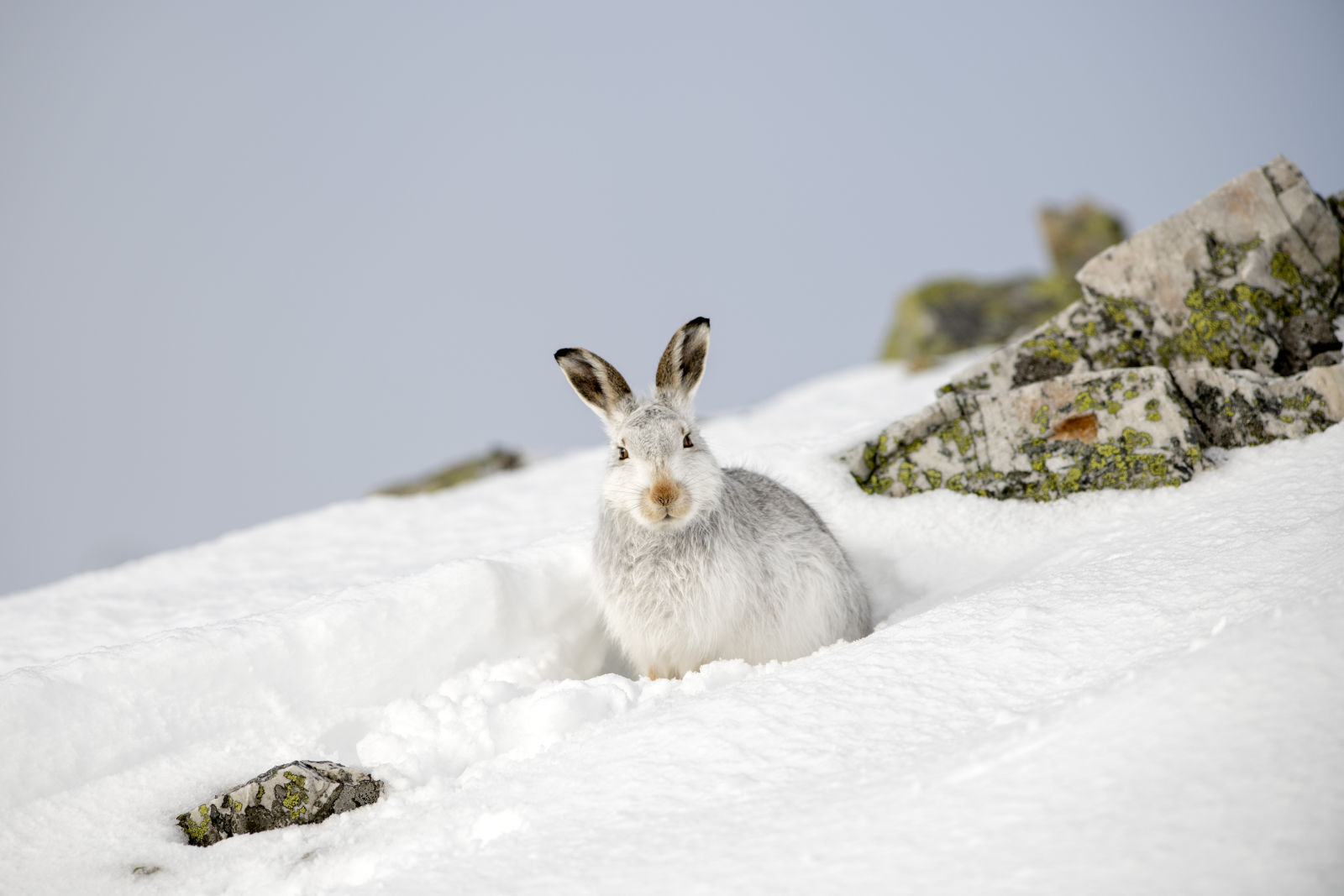Wildlife in Central Europe has four seasons: spring, summer, fall, and survival mode. Because any animal that does not hibernate wages a constant battle, day after day, month after month, against the cold and scarcity of food. In this article, we explain 5 ways we can take to protect wildlife in winter.

A battle for survival
Wildlife in winter
Winter is an extreme situation that animals can survive only by using as little energy as possible. To do this, some species reduce their body temperature – even slowing their heart beats and their metabolism. For ibexes, this even means ensuring they have sufficient reserves to move into the sunshine after a cold night.
This is what animals can do for their survival. But we humans need to show consideration too: whenever an animal is startled – for example, by a hiker – it needs to instantly ramp up its entire metabolism to quickly take flight. This consumes so much energy that the flight reflex can even be life-threatening. We therefore need to avoid this happening in the first place.



photo credit left, below: Franziska Consolati
5 tips for protecting wildlife in winter
1. Respect conservation areas
For many animals, conservation areas are the only chance of survival in winter. This is not just because they can spend the winter peacefully there. Whether animals can predict potential danger plays an important role too. For example, wildlife close to busy winter hiking routes becomes accustomed to human disturbance. Conservation areas are now indicated in many tour planning apps. A usage ban can also be issued for official hiking trails in winter.
2. Stay on marked routes
Whether you’re on a marked path in a conservation area or in open terrain with no special protection: stay on marked routes, don’t make your own new paths, and avoid the temptation to “take a little shortcut”. Once again, the aim is to preserve safe havens for wildlife and avoid surprises.
3. Caution at twilight
Twilight is the most sensitive time of day. If we avoid forests, mountain peaks, and ridges in the morning and evening, we will be doing wildlife a special favor.
4. Touring at night
Moonlight tours must be carried out only on marked forest trails and night ski routes.
5. Keep dogs on a leash
Dogs walk best on a leash, even if the dog has reliable recall without a leash. This is less about the dog’s behavior and more about the fact that wildlife will instinctively flee from running dogs – even if the dog shows no interest.
Local alpine associations publish information on considerate winter hiking: Under the slogan Natürlich auf Tour (Naturally on Tour), the website of the German Alpine Association (DAV) provides a wide range of helpful advice and current rules.
For winter hikes in Austria and Switzerland, the websites www.respektiere-deine-grenzen.at and www.respektiere-deine-grenzen.ch provide useful information.

Wildlife in winter
ABOUT FRANZISKA CONSOLATI
Franziska Consolati (née Bär) is an author and adventurer. She had barely reached adulthood when she embarked on one of her first trips with Bedouins through the Sahara. Somewhere between the desert dunes, she lost her heart to our planet. Since then, she has traveled over half the world, immersed herself in foreign cultures, and explored wild nature beyond beaten paths. Each step has heightened her realization of the urgent need to take action to protect our Earth. Franziska worked for an environmental organization for four years before becoming a freelance author: focusing on both travel and environmental protection.
As the days get colder, anticipation for winter grows. Snow, mountains, time outdoors... To avoid disturbing native wildlife, which enters a real survival mode during the winter months, we have summarized the key points for outdoor activities in winter for you in this article: LINK
Did you know that our native wildlife is in constant survival mode in winter? To do this, some species reduce their body temperature – even slowing their heart beats and their metabolism. During this period, we need to show special consideration when outdoors in nature. We have summarized the most important points in this article: LINK
Our native wildlife has four seasons: spring, summer, fall, and survival mode. Because any animal that does not hibernate wages a constant battle, day after day, month after month, against the cold and scarcity of food. Humans have a role to play too in preserving the winter hibernation of wild animals. We explain more in this article: LINK














